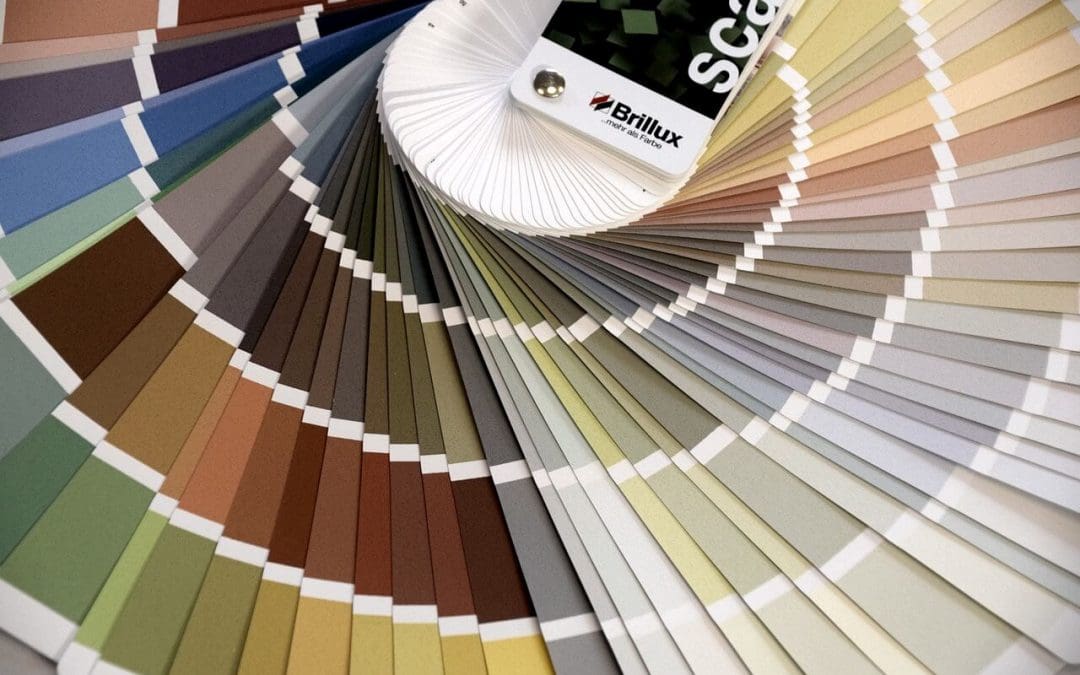Choosing paint colors for your home can be an exciting yet daunting task. The colors you select can significantly impact your living space’s overall atmosphere and aesthetic appeal. Whether you’re looking to refresh a room or embark on a full-scale renovation, understanding the impact of paint colors makes the process smoother and more enjoyable. In this guide, we’ll explore some essential tips and considerations to help when choosing paint colors for your home.
Consider the Mood When Choosing Paint Colors for Your Home
Before diving into color swatches, take a moment to consider the mood or atmosphere you want to create in each room. Are you aiming for a serene and calming environment in the bedroom, or do you prefer a vibrant and energetic feel in the living room? Understanding the desired mood will guide your color choices.
Evaluate Lighting
Lighting plays a crucial role in how colors appear within a space. Natural light, artificial light sources, and the direction a room faces can all affect how paint colors are perceived. Testing paint samples under different lighting conditions is essential to ensure they maintain their intended hue throughout the day.
Understand Color Psychology
Color psychology explores the emotional and psychological effects of different colors. For example, blue is often associated with tranquility and relaxation, while red can evoke feelings of passion and energy. By understanding these associations, you can select colors that align with the intended ambiance of each room.
Coordinate with Existing Elements While Choosing Paint Colors for Your Home
When choosing paint colors, consider existing elements within the room, such as furniture, flooring, and artwork. Opt for colors that complement these elements rather than clashing with them. Pulling colors from existing decor can create a cohesive and harmonious look throughout your home.
Sample Before Committing
Never underestimate the importance of sampling paint colors before making a final decision. Most hardware stores offer small paint samples that allow you to test colors directly on your walls. Take advantage of this opportunity to see how the colors interact with your space and how they appear in different lighting conditions.
Consider Undertones
Paint colors often have undertones, which are subtle hues that can affect how the color is perceived. Common undertones include warm (yellow or red) or cool (blue or green). Understanding the undertones of your chosen colors will help prevent unexpected color shifts once the paint is applied.
Start Small
If you’re hesitant about committing to bold or unconventional colors, consider starting with smaller areas, such as an accent wall or trim. This allows you to experiment with different colors and gauge your comfort level before applying them to larger surfaces.
Seek Inspiration While Choosing Paint Colors for Your Home
Seek inspiration from various sources, such as interior design magazines, websites, or social media platforms like Pinterest. Create mood boards or color palettes to visualize how different colors will work together in your space.
Be Open to Change
Remember that paint colors can always be changed if you’re not satisfied with the initial result. Embrace the process of experimentation, and don’t be afraid to step outside your comfort zone. Sometimes, the most unexpected color choices can yield stunning results.
Trust Your Instincts When Choosing Paint Colors for Your Home
Ultimately, trust your instincts and go with colors that resonate with you. Your home should reflect your unique style and personality, so don’t feel pressured to conform to trends or conventional norms.
Choosing paint colors for your home is a highly personal and creative endeavor. By considering factors such as mood, lighting, and existing decor, you can make informed decisions that enhance the beauty and livability of your living space. Visit a paint store, talk to professionals, and bring home some samples to get started choosing paint colors.
FAQs About Painting Your Home
Can I paint over wallpaper?
While it’s possible to paint over wallpaper, it’s generally not recommended, as it may lead to adhesion issues or a poor finish. It’s often better to remove the wallpaper, repair any damage to the walls, and then paint.
What tools do I need for painting my home?
Essential painting tools include paintbrushes, rollers, painter’s tape, drop cloths, paint trays, a ladder, and stirring sticks. Depending on the project, you may also need sandpaper, putty knives, and extension poles for hard-to-reach areas.
What type of paint should I use for interior walls?
For interior walls, latex or acrylic paints are commonly used due to their durability, ease of cleaning, and quick drying time. Choose a finish (such as matte, eggshell, satin, or semi-gloss) based on the desired aesthetic and functionality.
What safety precautions should I take when painting?
Ventilate the area well by opening windows and using fans to reduce fumes. Wear protective gear such as gloves, goggles, and a mask to prevent skin and respiratory irritation. If using a ladder, ensure it is stable and placed on a level surface.
Reliable Real Estate Inspections provides inspection services in Hilton Head and the surrounding areas. Contact us to request an appointment.

